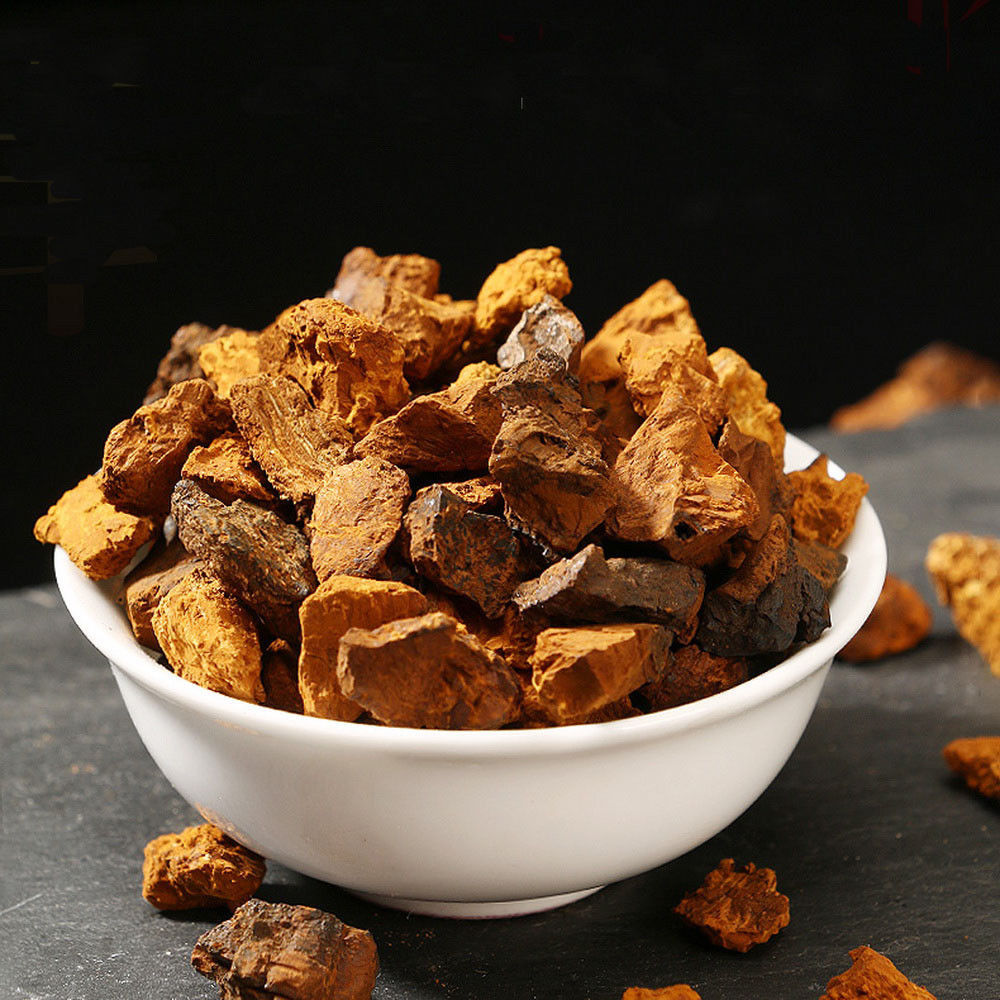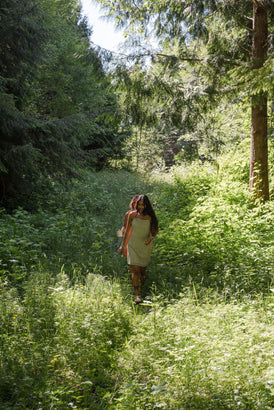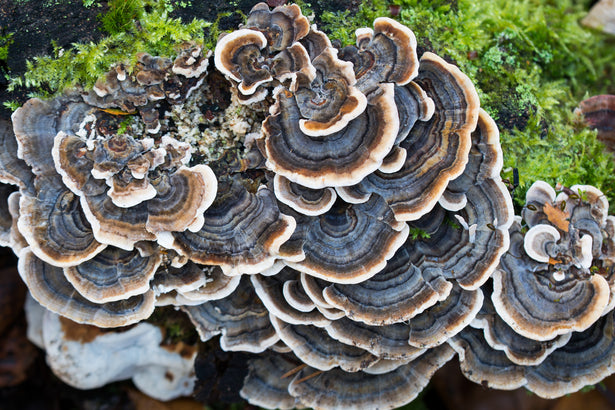Did you have a good holiday season with your loved ones? Did you spoil yourself by dipping into Aunt Janine's unhealthy buffet or Uncle Louis' scotch? We understand you! Following these little excesses, we would like to present you our health tip! CHAGA! This medicinal mushroom is a natural detoxifier and a boost for your immune system that will quickly get you back in shape to start 2019!
What is Chaga mushroom?
Chaga is a medicinal mushroom found in southern forests, including those of Quebec. Our province is in fact renowned for its chaga, which is marketed all over the world, due to its incredible virtues, its rarity and the quality of the Quebec chaga.
Inonotus obliquus, commonly known by the vernacular name Polypore obliquus or Chaga, a latinisation of the Russian term "чага", is a fungus of the genus Inonotus in the family Hymenochaetaceae. It's often considered a parasite of the birch tree, integrating itself into the trunk and bark of the tree, but its mission is quite different. Chaga only forms when the birch tree is injured, helping it to regenerate.
It can take 20 to 30 years to develop inside the trunk and 3 to 10 years outside. It's at this time that it's recommended to collect parts of it. Chaga accompanies the birch until it dies. It's thus realised that its formation time is very long and that this resource of nature remains scarce, not very sustainable and must be harvested respectfully and sparingly.
How is using Chaga beneficial?
Antioxidant, fortifying, antiallergic, antiviral, antiseptic, healing, detoxifying, anti-inflammatory, anti-tumour, lowers blood sugar and blood pressure... to name but a few of its virtues.

Chaga, the king of mushrooms, deserves its title.
Why does this mushroom have these super medicinal powers? There've been many studies on chaga, but studies based on in-depth research are rare. Here's a very comprehensive site where the facts are highlighted and the myths debunked: https://oriveda.wordpress.com/chaga-the-facts/.
However, some chemical elements are undeniable. For example, chaga contains a lot of riboflavin and niacin. It's also loaded with phenol, a component that strengthens the skin, as well as copper, calcium, potassium, manganese, zinc and iron. It contains more SOD CoEnzyme 10 (CoQ10), and more vitamins C and E, than barley grass, seaweed, prunes, fish oils and essential oils. It's also one of the world's best sources of pantothenic acid, a necessary vitamin for the well-being and an essential for the metabolism of the various energy nutrients: carbohydrates (sugars), lipids (fats), amino acids (constituents of proteins). This mushroom combats oxidative stress (related to skin aging), prevents or slows down the risk of cancer and lowers low-density lipoproteins (LDL), considered the "bad" cholesterol. All studies point to the significant benefits of this mushroom for humans - both inside and out.
Please note that Health Canada classifies Chaga as a natural health product. However, the government agency suggests that pregnant or breastfeeding women consult a health professional before consuming it. It's important to do your own research and make up your own mind about its virtues. One thing is certain; consuming chaga on a regular basis could have a real beneficial impact on your overall well-being due to its immune supporting properties, detoxifying impact and energy giving ability. Give it a try!
How to eat chaga?
We recommend you to try our MushUp VITAL coffee, which contains powerful chaga extracts. This would allow you to easily and regularly consume it directly in your favourite morning drink.
It's undeniable that for hundreds of years, chaga, often prepared as a tea, has been consumed by many Eastern European and Asian peoples for its various virtues. This decoction was (and still is) particularly popular among hunters and foresters, as the drink relieves hunger, removes fatigue, refreshes, and increases work capacity. Chaga tea is also used as a means of improving general tonus.
Chaga's cell walls are composed of chitin, one of the hardest natural materials of all, making it indigestible to humans without proper cooking. Here's how to prepare your Chaga for infusion:
| Grams/litre of water (32 fl oz) | Brewing time | Reuse | |
| Chunks | 14 g (5-7 morceaux) | 3 to 4 hours min | 3 - 4 times |
| Nuggets | 14 g (1/4 cup) | 3 to 4 hours min | 1 - 2 times |
| Powder | 10g (full tablespoon) | 1 to 2 hours | None |
Place the pot on the cooker top and cook over low to medium heat - we strongly recommend keeping the water below boiling point, as a too high temperature can destroy some of the active ingredients. With the hot water extraction process, you'll have a strong tea in two to eight hours, depending on whether you are using powder, nuggets or chaga chunks.
The tea is ready when the liquid is black like coffee. Keep in mind that you'll need to adjust the amount of grams per water and the brewing time when you reuse the product to achieve the desired strength.
It's also interesting to learn that the Khanty (one of the first peoples to consume chaga, located in Siberia) used chaga to make soapy water. The Cree, on the other hand, collected the soft yellow-brown core of the chaga to light a fire. This technique is still commonly used in Russia by Chaga gatherers.
To learn more about chaga and its incredible properties, you'll find below several interesting links. To obtain chaga in an eco-responsible way, we recommend the Mycoboutique on St-Denis, or on Chaga.ca, or write to us if you wish to obtain extracts (triple extraction) of our mushrooms.
NOTE: If you have any chaga tea left over, do not throw it away. Simply pour the excess into a container and store it in the refrigerator. The drink can be enjoyed either hot or cold, so there's no need to heat the tea before drinking.You can also always freeze your chaga tea. Ideally, it's possible to form ice cubes and then add them to other drinks, thus increasing their nutritional value.
To find out more about chaga, visit our "Superpowered Mushrooms" section
References for this article:
Chaga, the facts :
https://oriveda.wordpress.com/chaga-the-facts/
"Chaga, le champignon qui aime l'hiver", La Presse
https://www.lapresse.ca/vivre/gourmand/201601/26/01-4943874-chaga-le-champignon-qui-aime-lhiver.php
WebMD : Chaga
https://www.webmd.com/vitamins/ai/ingredientmono-1474/chaga
Research - Chaga
https://oriveda.com/resources.php
Chaga article
https://articles.mercola.com/teas/chaga-tea.aspx
Bloggers and webmasters:
Please republish your favourite MushUp content for free. All we ask is that you attribute the content to the author, by including the following short statement "This article is courtesy of MushUp" and link the MushUp word to this website. Thank you!











